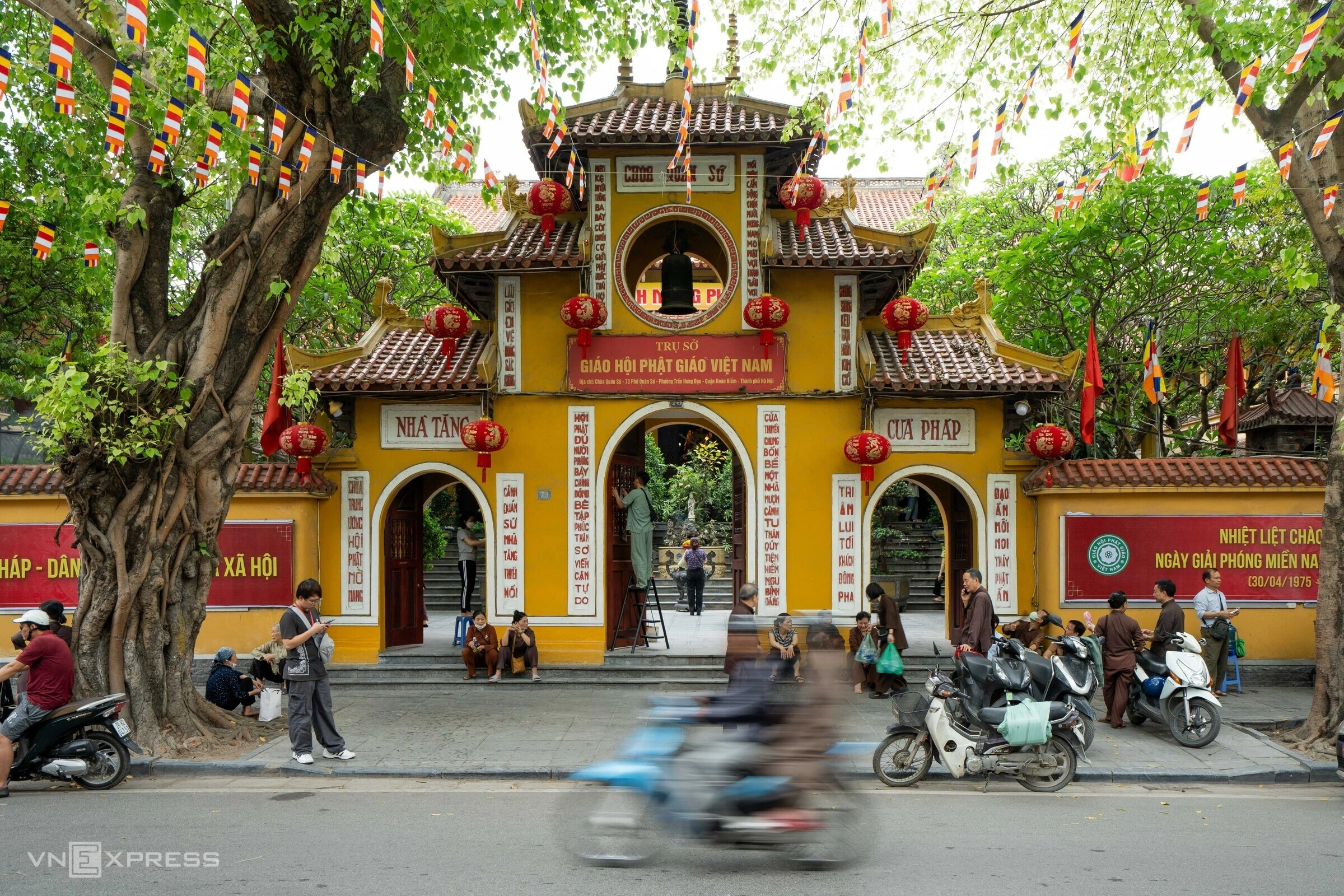Quan Su Pagoda dates back to the 16th century. It stands out for its blend of Northern communal house and pagoda architecture. The pagoda is the third stop on the journey to welcome Buddha’s relics during the Vesak festival.

Quan Su Pagoda, located on the street of the same name in Hoan Kiem district, is the third of four locations to welcome the Buddha’s relics on the occasion of the 2025 United Nations Day of Vesak. The procession began on the afternoon of May 13.
On the morning of May 7, hundreds of Buddhists cleaned up Quan Su Pagoda, in Hoan Kiem District, to prepare for decoration and to bring back the relics.
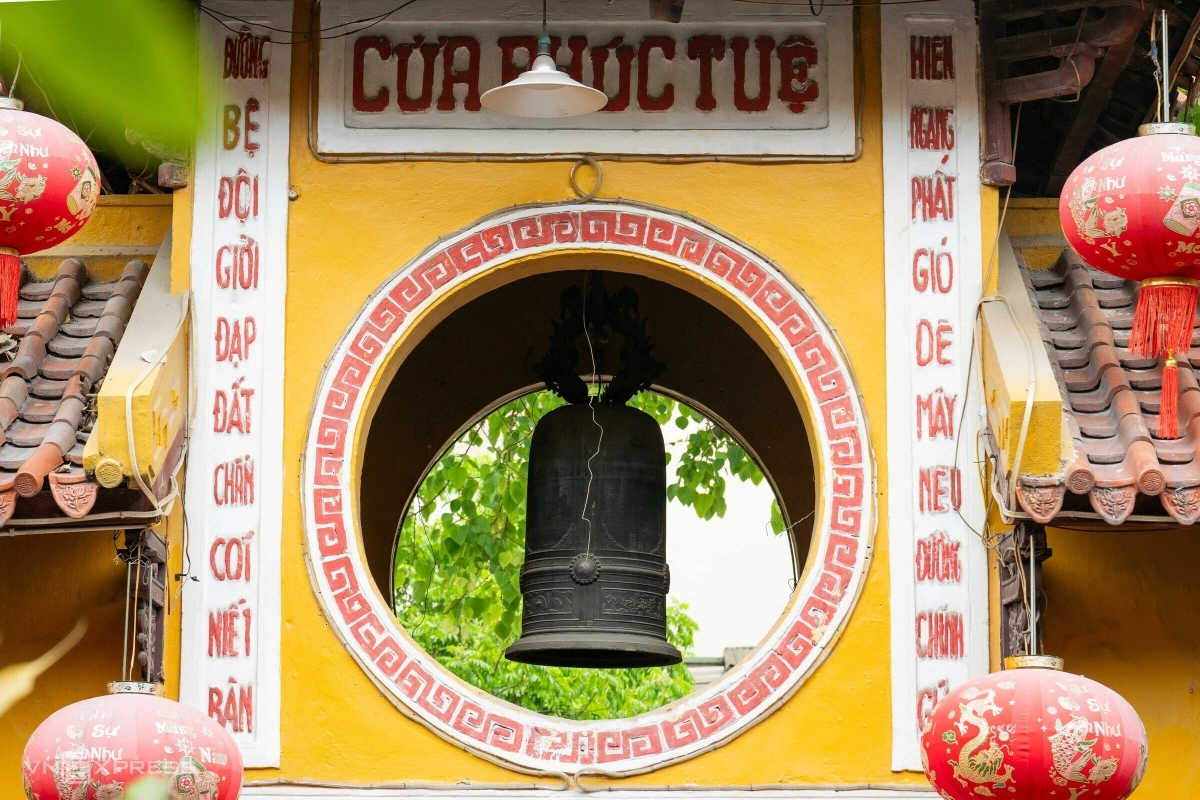
According to the book “Hoang Le Nhat Thong Chi”, in the 16th century, King Le The Tong built a building called Quan Su to welcome envoys to Thang Long. Since most envoys were devout Buddhists, the king built a pagoda in the Quan Su area to host their ceremonies. Over time, however, historical changes gradually erased the original Quan Su building. Nevertheless, the pagoda still stands today.
In the picture is the bell tower located in the middle of the temple’s three-story roof gate. On the three-story gate, visitors can see many parallel sentences in Vietnamese.
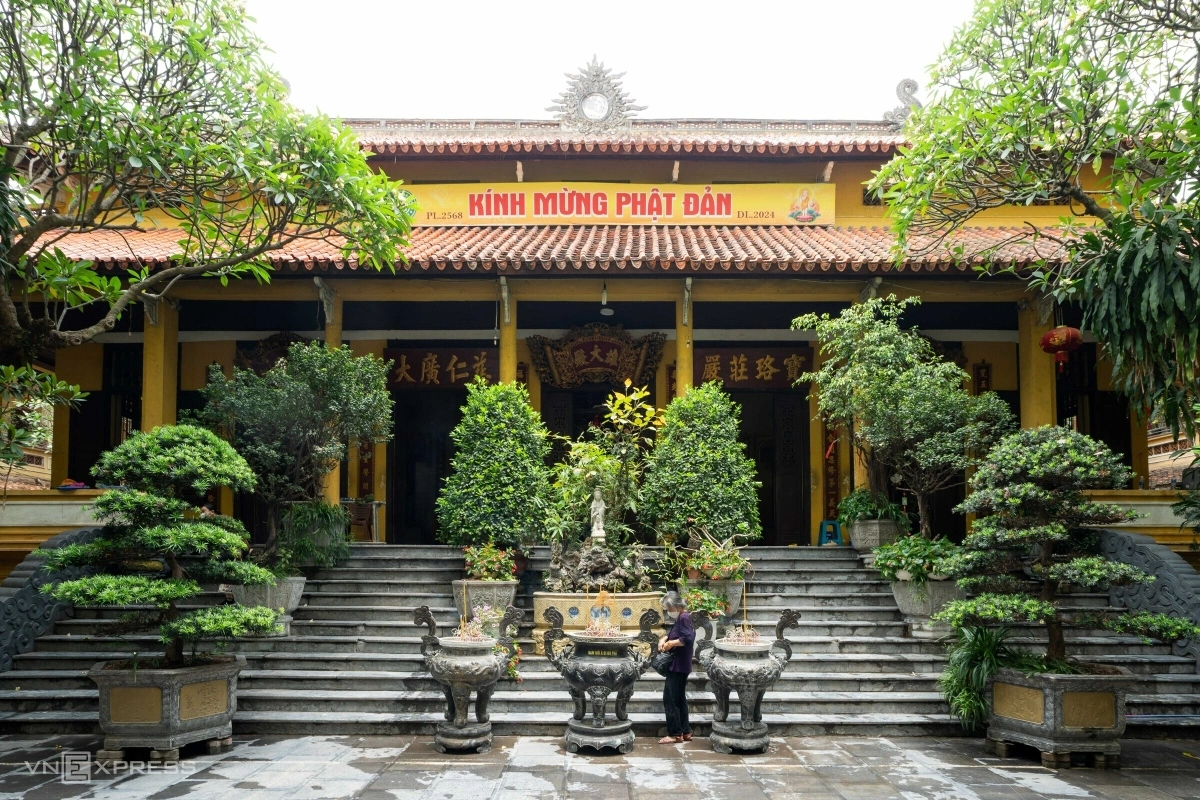
Through the gate is a small, brick-paved courtyard leading to the main hall.
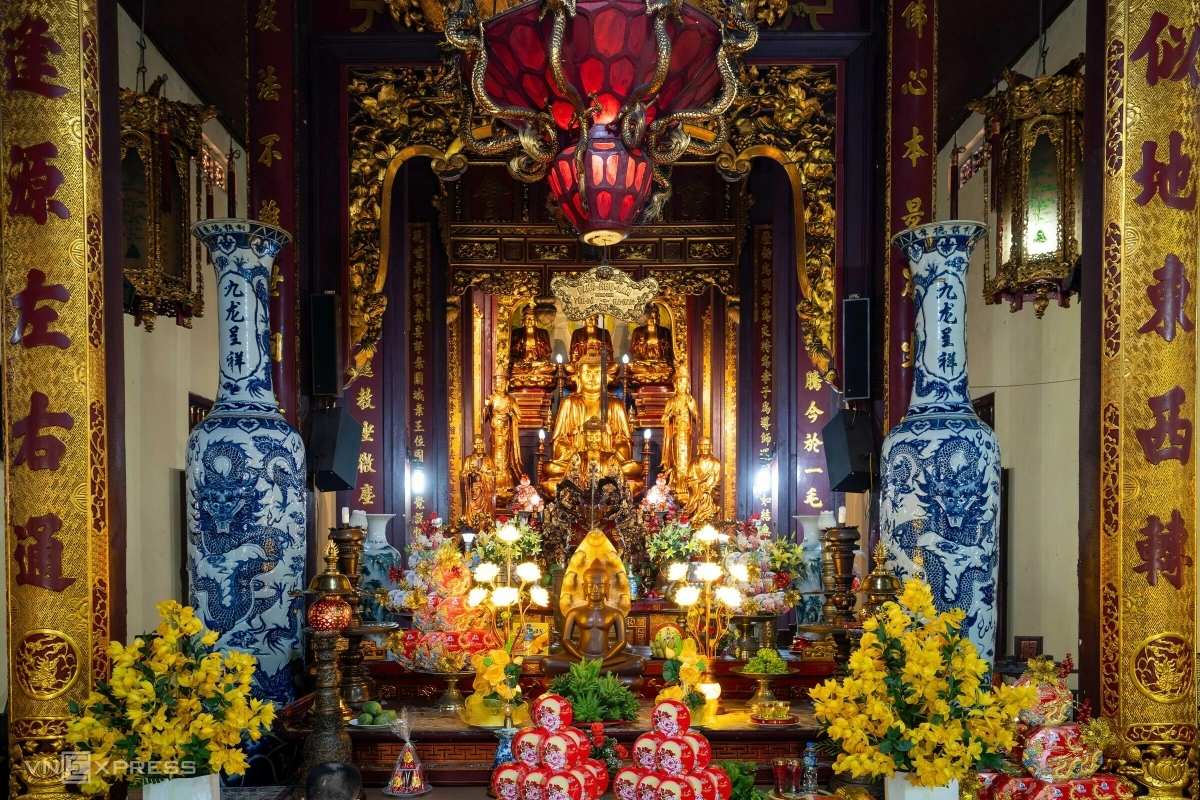
The Buddhist temple is divided into five layers. The first layer worships the statue of the Three Buddhas; the second layer is the Amitabha Three-Ton statue set, including the statue of Amitabha Buddha meditating on a lotus throne, flanked by two Bodhisattvas Avalokitesvara and Mahasthamaprapta; the third layer has the statue of Shakyamuni Buddha preaching, flanked by two statues of Mahakasyapa and Ananda; the fourth layer has the Nine Dragons throne; the fifth layer has the Dharma Protector statue.
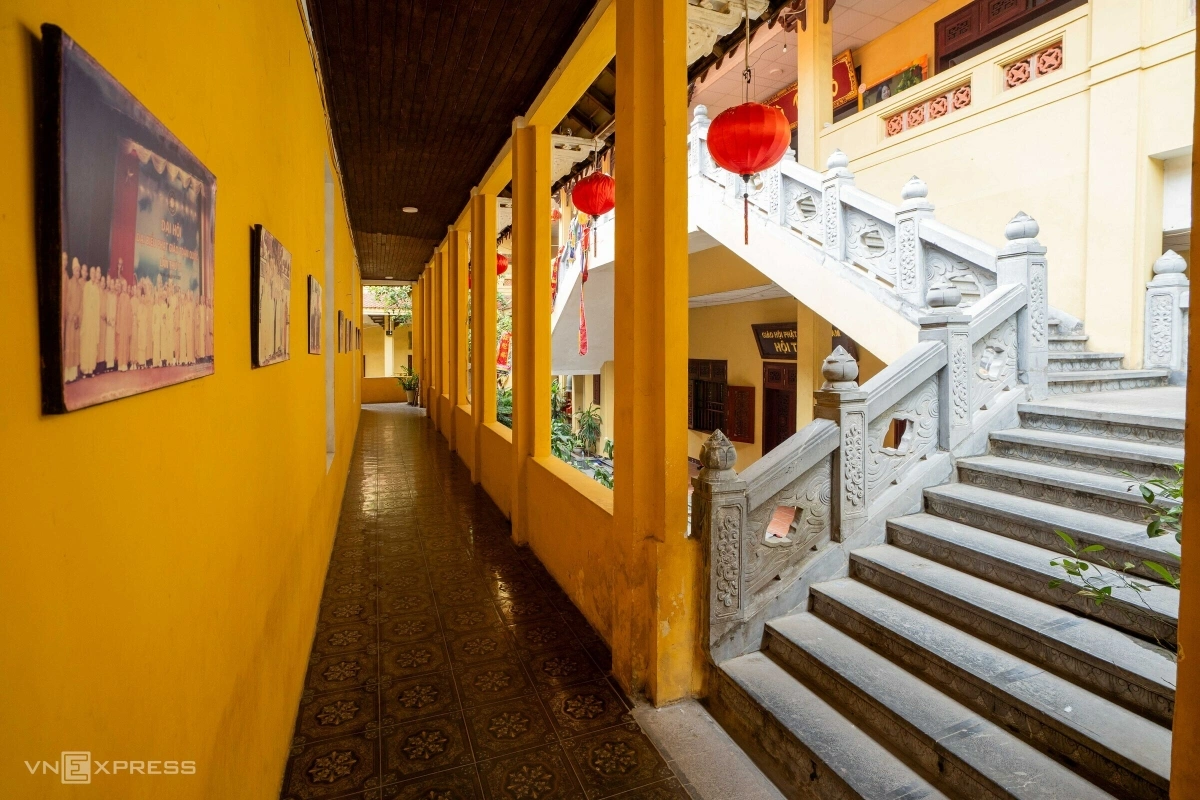
The space behind is used as a library, lecture hall, office, guest house, and monk’s room.
In 1981, the Vietnam Buddhist Sangha was established and chose Quan Su Pagoda as its Central Headquarters. Since then, the pagoda has hosted many important events in both Vietnamese and global Buddhism.
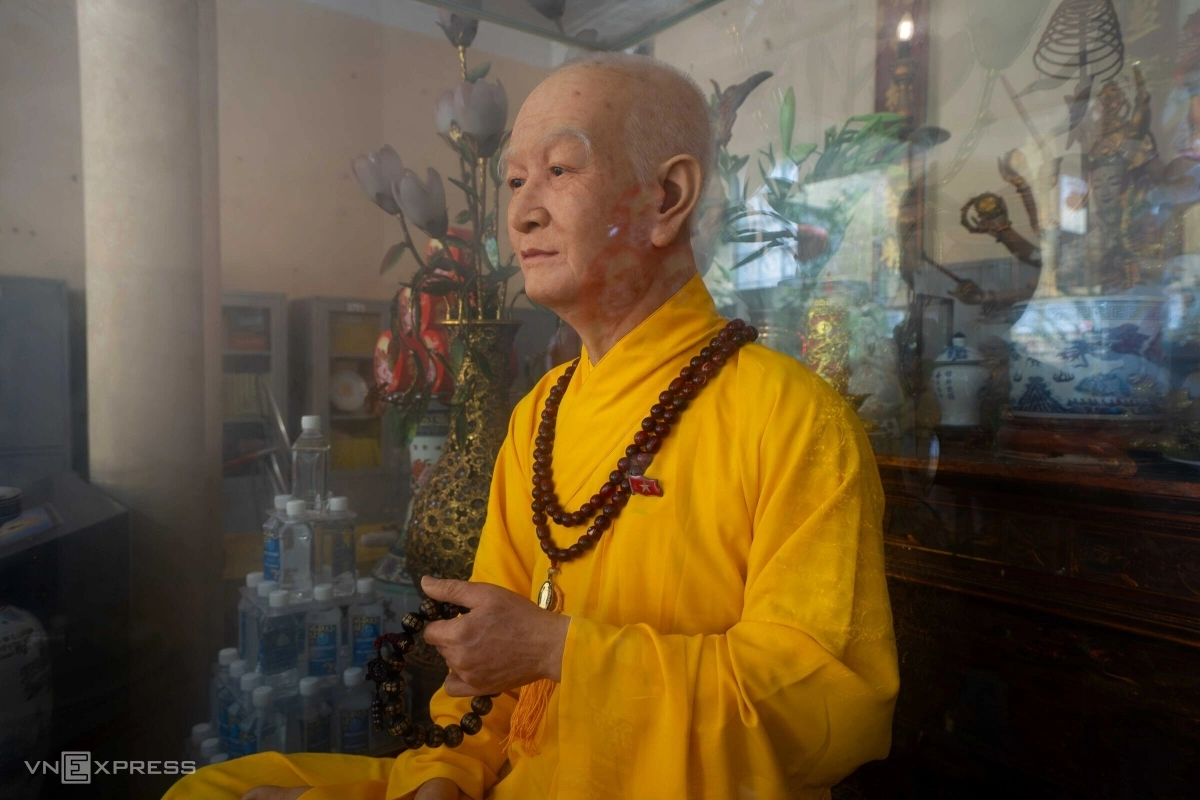
The wax statue of the late Venerable Thich Thanh Tu is located on the first floor. The statue is famous for the story of having its passport checked when it was brought back from Thailand because it looked so lifelike. According to the temple, the wax statue was made with the exact location of every wrinkle, age spot, tendon, and hand, which took a year from the idea to completion.
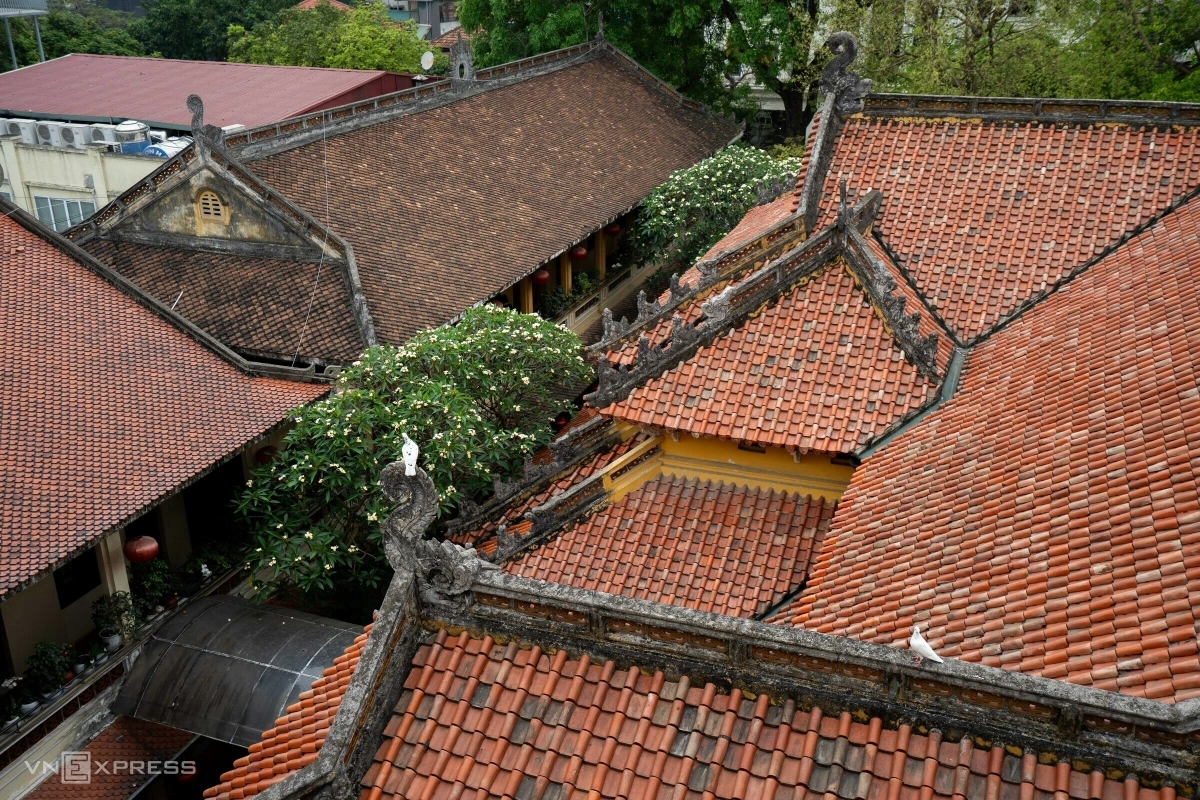
From above, the pagoda stands out with its red fish-scale tiled roof, typical of Northern communal houses and pagodas.
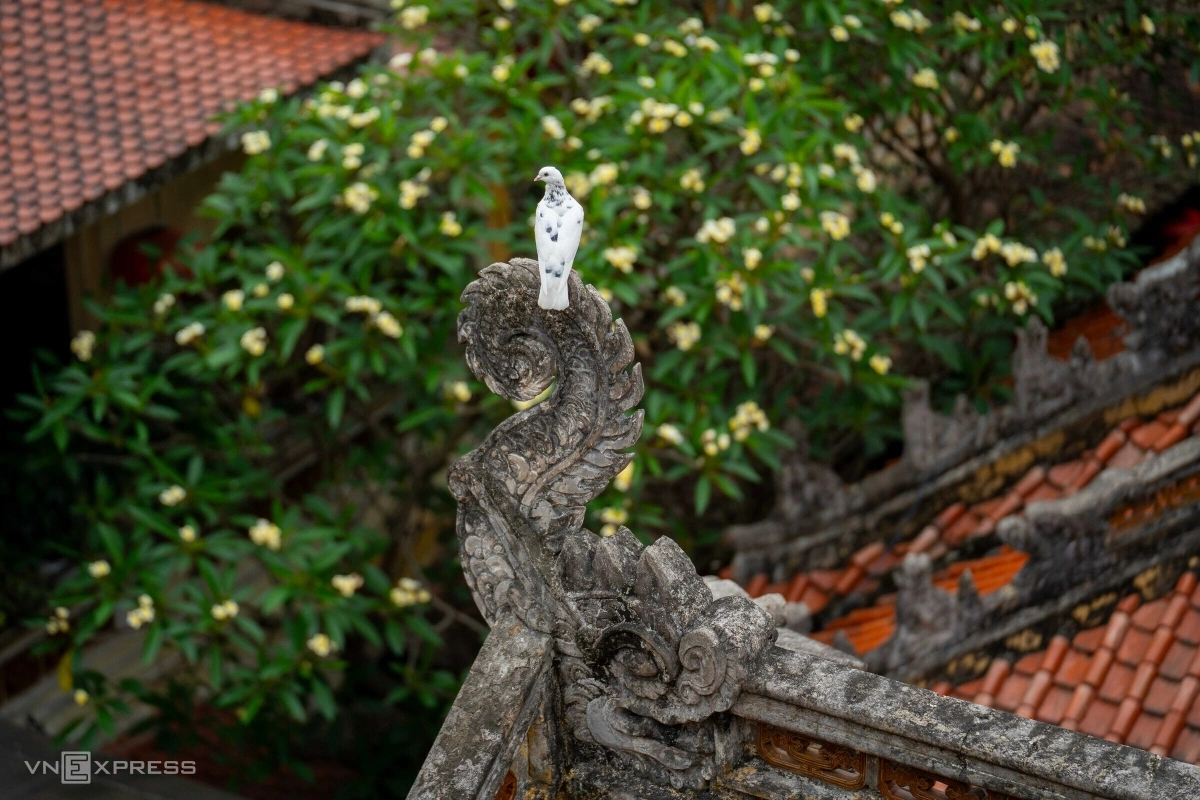
A peaceful corner seen from the fourth floor of Quan Su Pagoda.
The temple has few tourists, almost only Buddhists and locals come to worship.
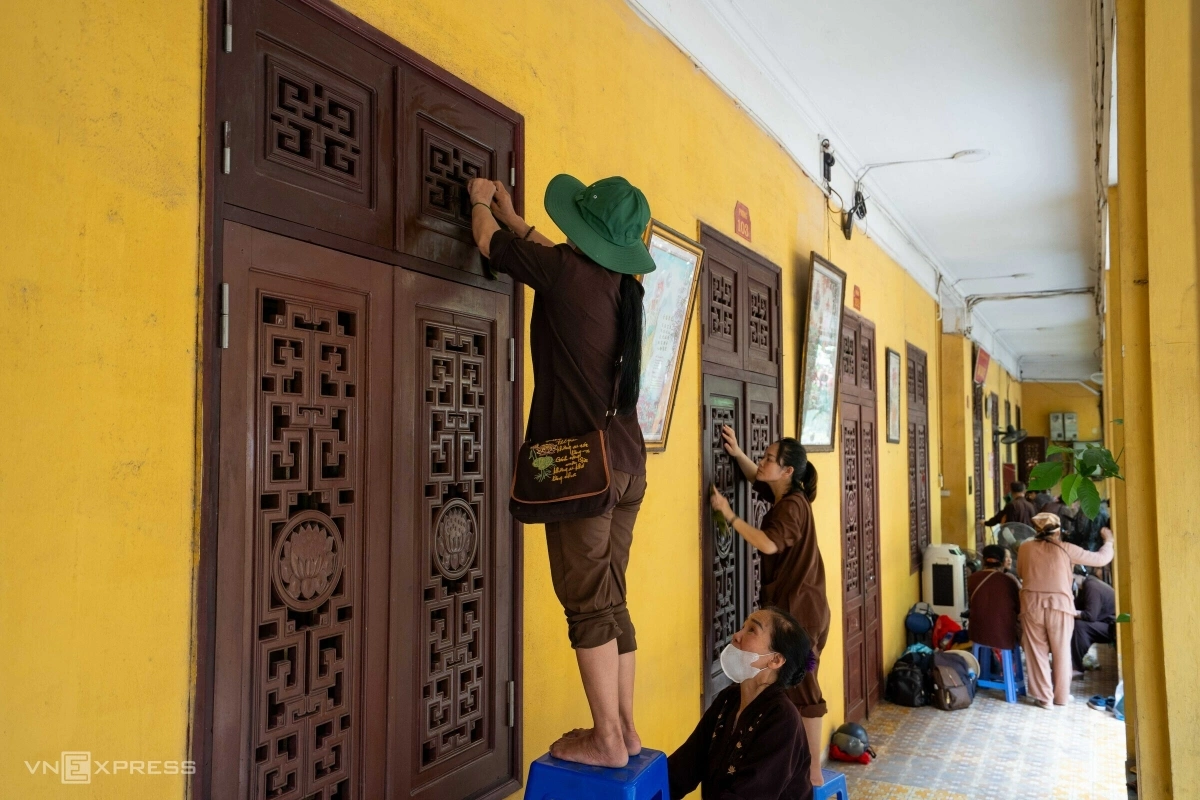
These days, the atmosphere at the pagoda is always bustling with people preparing to welcome the Buddha’s relics on May 13. Millions of people are expected to come to worship at Quan Su Pagoda during the three days of May 14-16.
The procession of Buddha’s relics is scheduled from 2:30 p.m. to 4:30 p.m. on May 13. The route begins at Noi Bai Airport and continues through Nhat Tan Bridge, Vo Chi Cong, Dao Tan, Kim Ma, Nguyen Thai Hoc, Le Duan, Tran Nhan Tong, Tran Binh Trong, and Viet Xo Palace. From there, the relics will be carried on foot to Tam Bao Quan Su Pagoda.
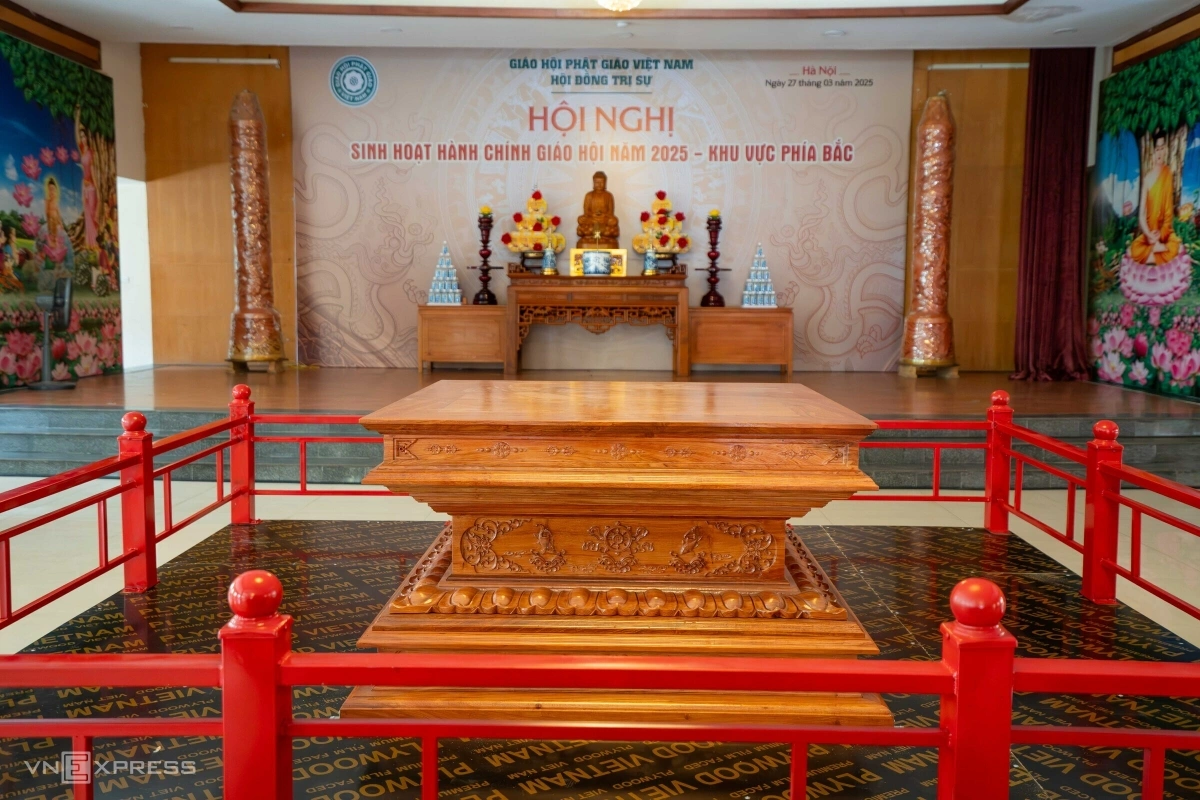
According to Buddhist scriptures, after attaining enlightenment under the Bodhi tree, Buddha Sakyamuni spread the Dharma, preaching by day and meditating by night. His practices accumulated great energy. At 80, upon his passing, his body was cremated, leaving behind countless relics-solid, colorful crystals.
In the picture is the space prepared for people to worship Buddha’s relics at Quan Su Pagoda.
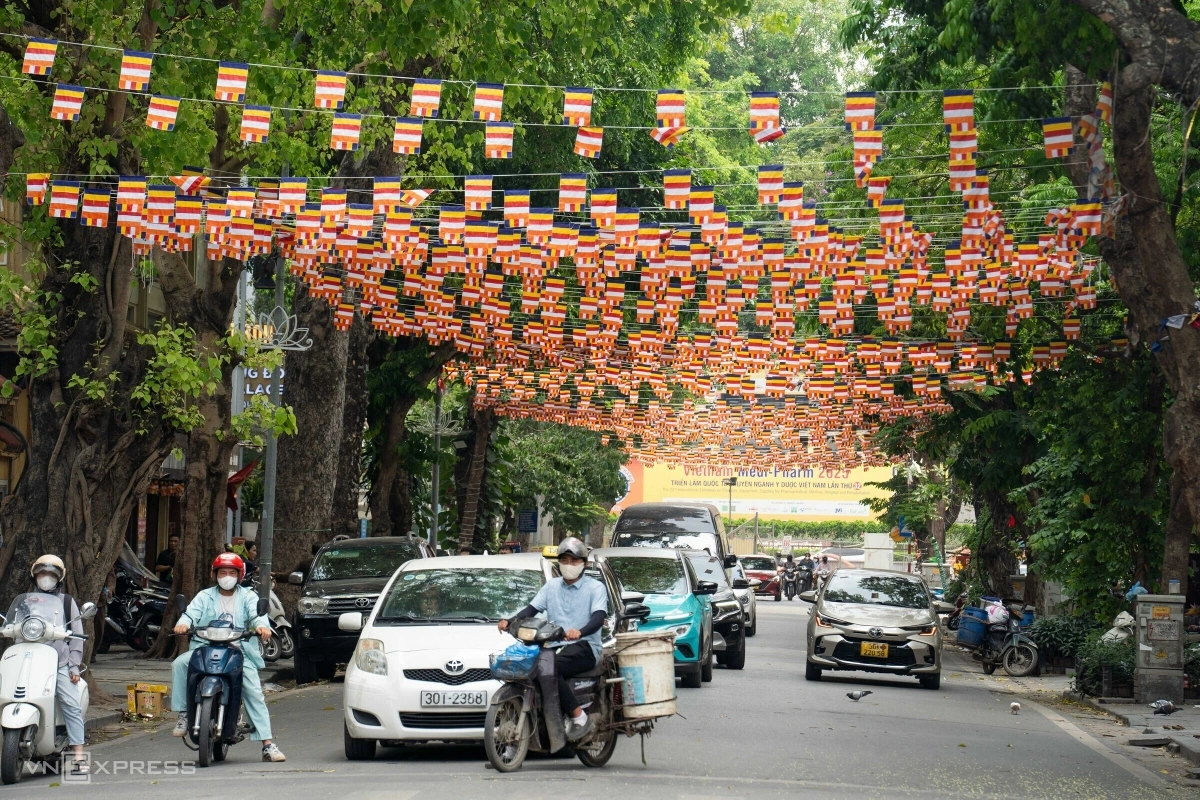
Along Quan Su and Ly Thuong Kiet streets these days are covered with Buddhist flags.
Photos: Hoang Giang

